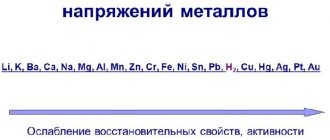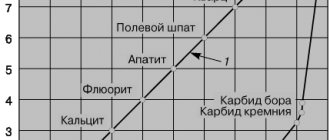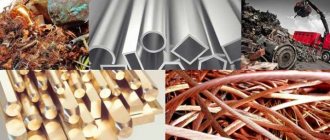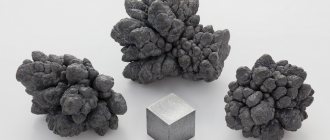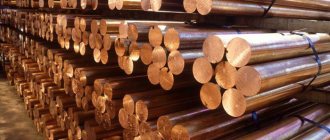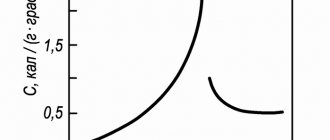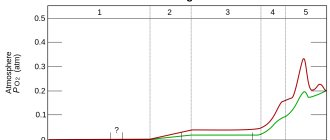Physics of the process
Fire is the violent oxidation of materials in the process of an irreversible exothermic reaction with the release of energy in the form of heat and light. Fire occurs as a result of the ignition of fuel with a sufficient amount of oxygen to maintain the oxidation rate at the level of a chain reaction. Flame is the visible gaseous part of fire. Above a liquid it arises as a result of its evaporation, above solid fuel due to the release of flammable gas from it during the process of pyrolysis.
Fire is the violent oxidation of materials in the process of an irreversible exothermic reaction with the release of energy in the form of heat and light
The dominant flame color changes with the temperature of the open fire. A good illustration of this phenomenon is the burning of a traditional fire. Next to the wood, where the most violent reaction occurs, the fire is white, turning yellow. Above this area the color changes to orange, marking the area where it is colder. The next, even colder area is red. Above it, the reaction practically does not occur, and above it one can observe unburned carbon particles such as smoke. The range of fire burning temperatures in accordance with the color scheme looks like this:
- barely noticeable red - 500°C;
- dark cherry - 800°C;
- cherry red bright -1000°C;
- deep red-orange - 1100°C;
- bright orange-yellow - 1200°C;
- whitish yellow - 1300°C;
- bright white 1400°C;
- dazzling white - 1500°C.
Zones
In a laminar diffusion flame, 3 zones (shells) can be distinguished.
Inside the flame cone there are:
- dark zone (300-350 °C), where combustion does not occur due to a lack of oxidizing agent;
- luminous zone where thermal decomposition of fuel and its partial combustion occurs (500-800 ° C);
- a barely luminous zone, which is characterized by the final combustion of fuel decomposition products and a maximum temperature (900-1500 ° C).
This is interesting: Biocenosis
Types of wood
There are several patterns that cause differences in the combustion of different types of wood. First of all, this is the presence of resins - they significantly add the calorific value of firewood. Soft wood burns more easily due to its low density. Heavy rocks maintain combustion for a long time.
While the density of wood varies significantly from type to type, their calorific value per unit mass is almost the same (with the exception of resinous softwoods). Regardless of what types of trees are used for firewood, humidity is the main factor influencing both the combustion process and the thermal result.
Knowledge of different types of wood allows you to get comfortable burning with less wood consumption
List of features of wood of some species:
- acacia - burns slowly and gives a lot of heat, dries quickly, makes a characteristic crackling noise in the fireplace;
- birch - burns quickly, ignites easily even when wet, gives an even and steady fire;
- beech is a high-calorie fuel and leaves little ash;
- oak - high calorific value, emits a pleasant smell when burning, dries for a very long time;
- poplar - low heat of combustion;
- fruit trees - burn slowly and evenly;
- conifers - aromatic smoke, can shoot resin, produce a lot of soot.
Knowing the basics of handling wood as fuel allows you to achieve comfortable combustion with less wood consumption.
It is only important not to forget the main thing: an uncontrolled open flame can be very dangerous for living beings. In addition to burns from flames and smoldering coals, fire can cause incomparably more trouble if it breaks out into a fire.
Fire and ancient people
The controlled use of fire to provide warmth and light is one of the first great achievements of mankind. This made it possible for ancient people to explore places with harsher climates, prepare food, protect themselves from predators, and process certain materials. It has been proven that the ancestors of modern people knew how to use fire for at least 790 thousand years. Some archaeological evidence indicates its use much earlier:
- 1.6 million years ago - analysis of burnt antelope bones in a cave in South Africa confirms that they were burned by australopithecus in a man-made fire.
- 1.9 million years ago - traces of the oldest controlled fire were found in another cave on the border of the Kalahari Desert. Preliminary evidence suggests that Homo erectus has been cooking over fires since its appearance.
Fire is very important for human development, as it allowed our ancestors to cook food and keep warm
Many cultures have worshiped open flames and used them in religious rituals for thousands of years.
Fire has retained its role as an important element in many ceremonies to this day. His significance for people was so great that he became a hero of myths and the basis of ideological systems: Prometheus stole fire from the gods to give it to people; Aristotle defined it as one of the four natural elements; Chinese philosophers gave it the role of one of the five essences that make up all living things.
This is interesting: Truck crane
Candle flame
The flame, which every person can observe when a candle, match or lighter burns, is a stream of hot gases that are pulled vertically upward, thanks to the force of Archimedes. The candle wick first heats up and the paraffin begins to evaporate. The lowest part is characterized by a slight blue glow - there is little oxygen and a lot of fuel. It is because of this that the fuel does not burn completely and carbon monoxide is formed, which, when oxidized at the very edge of the flame cone, gives it a blue color.
Due to diffusion, a little more oxygen enters the center. Subsequent oxidation of the fuel occurs there and the temperature increases. But this is not enough for complete combustion of fuel. At the bottom and in the center there are coal particles and unburnt droplets. They glow due to intense heat. But evaporated fuel, as well as combustion products, water and carbon dioxide, practically do not glow. At the very top there is the highest concentration of oxygen. There, the unburned particles that glowed in the center are burning out. It is for this reason that this zone practically does not glow, although the temperature there is the highest.
Spread speed
Flame propagation through a pre-mixed (undisturbed) medium occurs from each point of the flame front normal to the flame surface. The magnitude of this normal flame propagation speed (hereinafter referred to as NFSP) is the main characteristic of a flammable environment. It represents the minimum possible flame speed. NSRP values differ for different combustible mixtures - from 0.03 to 15 m/s.
The spread of flame through real-life gas-air mixtures is always complicated by external disturbances caused by gravity, convective flows, friction, etc. Therefore, the actual flame propagation speeds always differ from normal ones. Depending on the nature of combustion, flame propagation speeds have the following ranges of values:
- deflagration combustion – up to 100 m/s;
- explosive combustion – from 300 to 1000 m/s;
- detonation combustion – over 1000 m/s.
